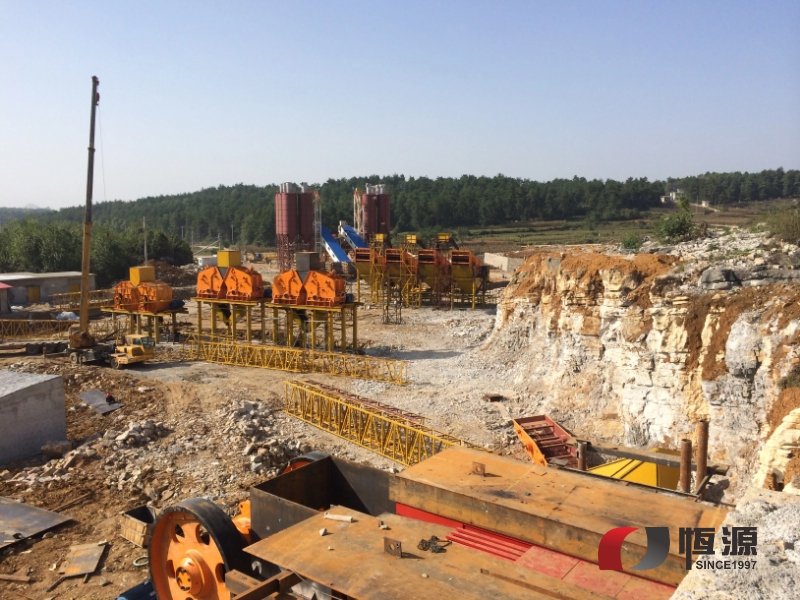Brief introduction of basalt crushing scheme:
Hard rock refers to the uniaxial ultimate compressive strength of rock specimens under saturated humidity (diameter is 7-10CM, height is the same as diameter) greater than 29.4*103kPa (such as granite, diorite, basalt and other magmatic rocks: iron, calcareous cemented conglomerate, sandstone, limestone, mudstone, dolomite and other sedimentary rocks; gneiss, quartzite, marble, slate and other metamorphic rocks). The abrasion resistance of wear-resistant parts is very high. Therefore, the design of hard rock production line is reasonable, not only considering the investment cost of crushing project, but also considering the operation cost.

Basic process of basalt crushing production line:
Stone is evenly sent to jaw crusher by vibrating feeder for rough breaking, material after rough breaking is sent by belt conveyor to crush cone crusher for further crushing, crushed material is conveyed to vibrating screen for screening, materials meeting the requirements of finished product particle size are conveyed to finished product stack by belt conveyor; materials that do not meet the requirements of finished product particle size are returned from vibrating screen for crushing or crushing. Fine crushing cone breaking processing, forming a closed-circuit cycle. The granularity of finished products can be combined and graded according to the needs of users.
Performance of basalt crushing production line:
The production line of hard rock has high automation, high crushing rate, low operation cost, energy saving and environmental protection, uniform particle size, good grain shape and grade coordination. The production line is mainly based on rock hardness and customer's requirement for product size. According to different production site conditions, Shanghai Hengyuan provides customers with comprehensive process plan and technical support. It can also design non-standard matching parts according to customer's actual installation conditions.